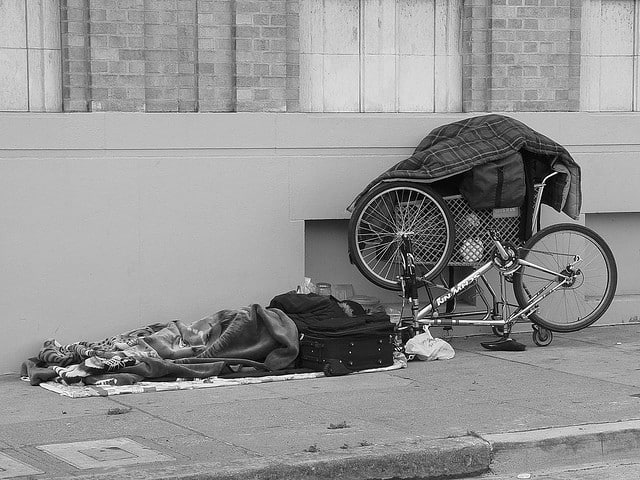In the field, anthropologists are often presented with competing narratives, imaginings juxtaposed with reality, and the collision of facts with opinions and perceptions. The narratives of research participants (also read as friends, colleagues) are often tangled, intertwining, or interconnecting, but collectively make visible wide arrays of experiences, perceptions, and understandings. Ethnographers are charged with the challenging task of navigating these narratives and the relevant scholarly bodies of work, finally coming to an anthropological perspective. This ethnographic journey is often presented as a linear process: from problem to research questions, data collection to analysis, and then to the final write-ups of the analysis, wherein we support/reject hypotheses or provide the answers to initial research questions.
However, research rarely follows the linear research model presented in textbooks or the classroom.
This two-part series presents my decidedly non-linear ethnographic journey. The first post offered tendrils of thoughts, perceptions, and opinions of individuals I encountered during my first seven months of dissertation fieldwork on alternative justice in the San Francisco Bay Area. When taken together, these tendrils present the convoluted and tangled narratives illuminating the myriad ways in which otherwise disconnected Bay Area residents are intricately bound up in the same story. As of 2014, when I first embarked on the project, this story also includes me. While the first article presents the larger context of journeys and transformations in the Bay, this post narrows in on the research process itself and the implications of rapid change for research participants.
 My journey to San Francisco began in December 2013, when one of my previous research sites erupted into civil war. For me, the beginning of the war signaled the end of my research project. Although I won’t enumerate the full journey that took me from my previous research project in northern Uganda to working in the western U.S., but suffice it to say that my central interest in legal anthropology, alternative conflict resolution options, and structural violence all guided me to research alternative justice in the Bay Area.
My journey to San Francisco began in December 2013, when one of my previous research sites erupted into civil war. For me, the beginning of the war signaled the end of my research project. Although I won’t enumerate the full journey that took me from my previous research project in northern Uganda to working in the western U.S., but suffice it to say that my central interest in legal anthropology, alternative conflict resolution options, and structural violence all guided me to research alternative justice in the Bay Area.
Alternative justice practitioners and organizations – individuals and groups offering conflict resolution services outside the legal system – purport the ability of their work to advance social justice, particularly for groups marginalized by the formal legal system. As a result, alternative justice programs are implemented widely to address contemporary issues, such as combating the school to prison pipeline, providing sustainable alternatives to litigation, and offering cost-effective and less damaging justice options.
Marginalized groups are disproportionately affected by these issues and, although they purport to reach these groups, a number of political and economic constraints often impact the ability of alternative justice programs to reach individuals marginalized by the formal legal system.
These individuals are often members of minority ethnic or racial groups, non-English speakers, LGTBQ, alternatively abled, and low-income or homeless. However, much like my work abroad, the San Francisco Bay Area challenges homogenous assumptions about marginality.
Who is marginalized? How do they come to be considered marginalized? What does marginalization mean and what does it feel like to those that experience it?
Marginalization manifests visibly and invisibly. Makeshift homes from cardboard, sheeting, and other usable materials visibly dot the landscape under highway overpasses. Shopping carts and bags filled with personal belongings are evidence to highly mobile street living. These are often regarded as visible markers for economic, political, and social marginality with implications for health and well-being, inclusion, power, and stability.

Other forms of marginalization are less visible. Workers commuting an hour and a half to work each day, because they can’t afford to live in the places they work. People living in crowded conditions that far exceed the legal occupancy limit, renting portions of living rooms as though it’s a bedroom, and barely scraping by every month; all in the hopes that they are moving towards a better life. Although I embarked on this project anticipating that those visible marginalities would predominate the research, it is these invisible marginalities that began to emerge through observation and narratives.
In particular, alternative justice practitioners reveal the ways in which they experience marginalization. They share stories of low pay and long commute times, jeopardizing their ability to professionalize and become better practitioners. Family time is cut short; they stop pursuing hobbies they love so they can keep the job they have. For many, the cost of living in the Bay Area is more than financial: it’s personal and it’s social. Although these concerns seem to pale in comparison to other forms of marginalization, they are important because they impact alternative justice practice.
The core purpose of alternative justice is to resolve conflict in ways that build and strengthen communities and at little or no cost to disputants. This is often achieved by empowering individuals by building their skills and promoting healing after conflict has occurred.
Many practitioners consider these activities particularly important for low income, non-English speakers, and marginalized racial groups, because they are disproportionately affected by state violence and systematically excluded and/or targeted by the formal legal system. Thus, practitioners try to target these groups for their services. Ideally, practitioners speak (or employ individuals who speak) the foreign languages represented in the areas they serve. They train individuals from these communities with conflict resolution skills. Practitioners enter these communities to directly connect with people. However, practitioners are shifting these activities in response to professional and personal pressures.
Although there are different ways practitioners and organizations cope with operating in an area undergoing major transformations, they often face similar political and economic repercussions. Budget cuts force non-profit and for-profit conflict resolution practitioners alike to close or consolidate offices, moving service locations further from target communities. These journeys are paired with hiring fewer staff and increasing training costs. The result is greater responsibilities on fewer staff, mounting cost barriers for individuals wanting conflict resolution skills, and low to no cost conflict resolution services are placed at risk.
As budgets decrease, practitioners may begin to target clients who can afford to pay higher fees, shifting organizational missions and foci away from the most marginalized in society towards individuals and companies that can afford the fees for conflict resolution. Recognizing the potential deleterious effects of making this shift, some practitioners cope by increasing meeting facilitation services for other community-based organizations. Others steadily increase training fees, but continue offering low to no cost service fees, in the hopes that training fee income will compensate for decreasing grant or donor funds.
In addition to the economic challenges facing alternative justice practitioners and organizations, there are also legal and political obstacles. Potential changes to confidentiality for justice processes could affect the nature of alternative justice processes and the ability to ensure legally-binding confidentiality and anonymity for their clients.
This would disproportionately affect clients who have already been targeted by or involved in the legal system and effectively diminish one of the most compelling reasons to engage these models. There are calls to mandate rigid certifications in conflict resolution, professionalizing the field and standardizing practice. However the added cost barriers to maintain certification would again inhibit marginalized individuals from practicing alternative justice in their communities. The political and economic pressures are bound up in one another.

One of the most stunning examples is the uncomfortably close relationship between some conflict resolution organizations and the formal legal system. Conflict resolution cases are sourced directly from the police who have already responded to the incident. Many non-profits also receive substantial amounts of funding from various justice departments, municipalities, or counties, linking them with the associated political interests.
The configuration of conflict resolution practitioners in a challenging political and economic context provides a generative space for understanding the nature of alternative justice. In particular, increasing strain between imaginings of justice as it exists as a theoretical ideal versus the actuality of justice practice reveals complex contemporary challenges.
Where does the ideal alternative justice, which serves the most marginalized individuals, fit into the landscape when it receives funding and support from the police? What is the future of these models when they are pushed out of rapidly gentrifying communities?
The tension between the imagined idyllic world and difficult realities poses several challenges for alternative justice practitioners, but, in many ways, these are abstract and tangible challenges for all Bay Area residents. Whether it’s the imagined ideal of offering justice for the most marginalized communities or moving from underpaid start-up employee to millionaire investor, the imagined and the tangible, and process of making the imagined tangible, poses similar challenges for all the Bay Area’s residents.




